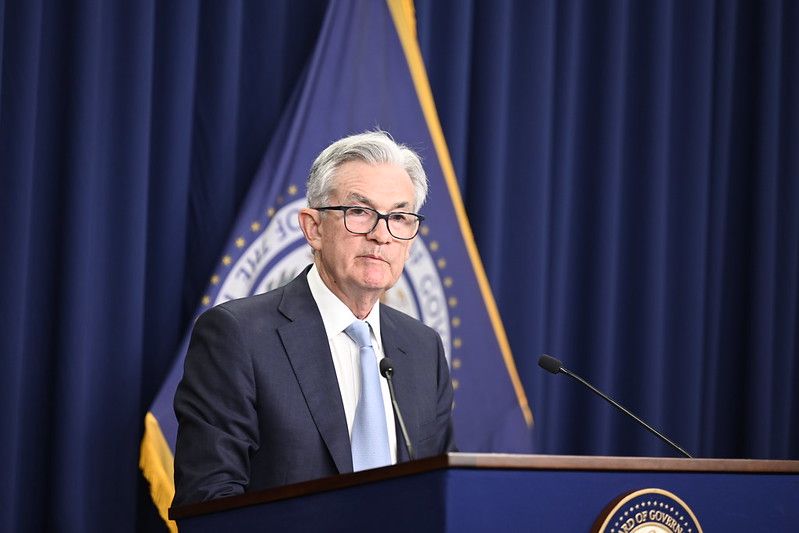The Federal Reserve has reduced its benchmark interest rate by 1% since September 2024, aiming to give the U.S. economy breathing room after earlier aggressive hikes.
Yet, the yield on the 10-year Treasury note, a key driver of borrowing costs, has risen to 4.80%, its highest level since 2023.
This apparent disconnect indicates how market forces, economic expectations, and fiscal policies shape long-term interest rates beyond the Fed’s direct control.
A snapshot of inflation and rates
Recent data from the US is a mixed bag. December’s Consumer Price Index (CPI) showed core inflation, which excludes volatile food and energy prices, increased by just 0.2% month-over-month.
That was a 0.3% drop from November’s reading. On a yearly basis, core inflation eased to 3.2%, marking the first significant decline in six months and raising hopes of progress toward the Fed’s 2% target.
However, the Federal Reserve is not yet satisfied. Meeting minutes from December reveal concerns among policymakers about sticky inflation and uncertainties surrounding fiscal, trade, and regulatory policies.
Fed officials have scaled back their projections for rate cuts in 2025, reducing expectations from four cuts to two, citing the likelihood that inflation could remain elevated longer than anticipated.
Why are Treasury yields rising?
The rise in the 10-year Treasury yield is rooted in forward-looking market behaviour.
Investors determine yields based on expectations of inflation, economic growth, and fiscal policy risks.
While the Fed controls short-term rates, longer-term rates like the 10-year Treasury is a measure of broader market sentiment.
Source: Bloomberg
One significant factor is the U.S. economy’s surprising resilience. December job data was strong, with 256,000 new positions added, and the unemployment rate edged down to 4.1%.
Such strength reduces the perceived need for aggressive monetary easing, leading investors to adjust their long-term inflation and growth outlooks upward.
Fiscal policies under President Donald Trump are also influencing yields. His proposed tax cuts and higher tariffs could increase inflationary pressures while driving up government debt.
This raises concerns about fiscal sustainability, prompting investors to demand higher returns for holding long-term bonds.
Compounding these pressures, the US Treasury’s recent shift toward shorter-term borrowing has reduced the supply of longer-term bonds, creating further upward pressure on yields.
Another layer is the term premium—the extra yield investors demand to take on long-term risks. After years of being negative, the term premium is now at its highest in a decade, reflecting growing uncertainty about the economic outlook.
This steepening of the yield curve is a sign that the bond market is pricing in greater long-term risks, even as inflation expectations remain relatively stable in the near term.
Globally, this phenomenon isn’t limited to the US, European bonds are approaching their late-2023 yield peaks, and Japan’s government bonds have surged to levels not seen since 2011.
This global repricing of long-term risk could indicate a deeper worry in bond markets, perhaps signalling the end of the post-Volcker era of stable, declining yields.
What do the Fed officials think?
Fed officials remain divided on the timing and extent of future rate cuts.
Federal Reserve Governor Christopher Waller remains “dovish”, suggesting that favourable inflation data could lead to additional cuts in the first half of 2025.
He noted that March could see a cut if recent disinflationary trends persist. However, he also cautioned that if inflation remains stubborn, rate reductions might be limited to one or two for the year.
New York Fed President John Williams leans more towards the “hawkish” side, stating that while disinflation is progressing, achieving the Fed’s 2% inflation target will take time.
He highlighted uncertainties around fiscal and trade policies as key risks to the economic outlook.
Similarly, Richmond Fed President Tom Barkin underscored the need for restrictive policies to fully curb inflation, even as recent data showed progress.
Investor sentiment and market implications
The disconnect between the Fed’s rate cuts and rising long-term yields has sparked debate among investors and economists.
Traders are now pricing in the first full rate cut by July, with expectations of around 40 basis points in reductions for the year.
However, many analysts warn that this optimism may be premature. Most believe that it will likely take several months of consistent inflation improvement before the Fed considers accelerating its rate-cutting pace.
Meanwhile, strong labour market data has eased fears of a sharp economic slowdown. Wage growth, hiring rates, and other employment metrics suggest that the Fed’s policies are restraining the economy without triggering overheating.
The divergence between Fed policy and market behaviour highlights the importance of flexibility in the current environment.
Persistent inflation or unexpected fiscal shifts could prolong uncertainty, making diversification across asset classes and geographies essential.
For bond investors, this is a rare opportunity to reassess duration strategies.
With 10-year Treasury yields at multi-year highs, locking in higher yields on long-term bonds can provide stability and attractive returns.
However, shorter-duration bonds may still be a safer play for those wary of inflation or fiscal shocks in the medium-term.
The post Rising bond yields explained: is the Federal Reserve losing its grip on interest rates? appeared first on Invezz

